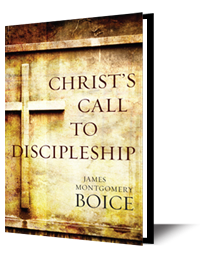The Parable of the Lost Sheep - Part One
 Theme: Shepherding
Theme: ShepherdingIn this week's lesson we see God reclaiming the lost.
SCRIPTURE
Matthew 18: 10- 14
See that you do not look down on one of these little ones. For I tell you that their angels in heaven always see the face of my Father in heaven.
“What do you think? If a man owns a hundred sheep, and one of them wanders away, will he not leave the ninety-nine on the hills and go to look for the one that wandered off? And if he finds it, I tell you the truth, he is happier about that one sheep than about the ninety-nine that did not wander off. “In the same way your Father in heaven is not willing that any of these little ones should be lost.”
LESSON
There are many images in the Bible that picture the protecting care of God for his people, but there is probably no image that is more greatly loved than that of the shepherd and his sheep, which is why it is found so often. What Christian can mention God as shepherd without thinking of the twenty-third Psalm: “The Lord is my Shepherd, I shall not want” (v. 1, KJV)? Or the tenth chapter of John where Jesus applied the image to himself: “I am the good shepherd. The good shepherd lays down his life for the sheep” (v. 11)? Yet it is not only in these well-known passages that the image occurs. A psalmist wrote, “We are his people, the sheep of his pasture” (Ps. 100:3). Isaiah said about God,
He tends his flock like a shepherd:
He gathers the lambs in his arms
and carries them close to his heart;
he gently leads those that have young. (Isa. 40:11)
The image occurs several times in Matthew. The first was in chapter 2, which cites this prophecy from Micah:
“But you, Bethlehem, in the land of Judah,
are by no means least among the rulers of Judah;
for out of you will come a ruler
who will be the shepherd of my people Israel.”
(Matt. 2:6, quoting Micah 5:2)
In chapter 9 Matthew wrote of Jesus’ compassion for the crowds “because they were harassed and helpless, like sheep without a shepherd” (Matt. 9:36; see Mark 6:34). In chapter 26 he reports Jesus as saying, “This very night you will all fall away on account of me, for it is written:
‘I will strike the shepherd,
and the sheep of the flock will be scattered’
(Matt. 26:31, quoting Zech. 13:7).
As far as the rest of the New Testament goes, Hebrews calls Jesus “that great Shepherd” (Heb. 13:20) and Peter calls him the “Chief Shepherd” to whom the under shepherds are accountable (1 Peter 5:4).
The notable thing about Jesus’ use of this image in Matthew 18 is that here it is a parable. Parables were an important teaching device for Jesus. Seven of them were introduced in chapter 13, and although this is the first that has been included since that chapter, we will encounter eight more as we go on. The rest will be found in Matthew 18:23-35; 20:1-16; 21:28-32, 33-46; 22:1-14; 25:1-13, 14-30 and 31-46.
What is a parable? A parable is a story drawn from real life that makes a single or at most a few spiritual points. It differs from a fable, which is not drawn from real life. Aesop’s fables are an example. In fables animals or inanimate objects talk. Again, a parable differs from an allegory in which nearly everything stands for something else. The best known example of an allegory is Pilgrim’s Progress by John Bunyan.
This parable is found again in Luke 15:3-7, but the setting and points are different in the two gospels. In Luke, Jesus is answering the teachers of the law who were criticizing him for associating with known “sinners.” Jesus used the parable to explain that he was associating with sinners in order to save them, just as a shepherd exerts himself for a lost sheep and rejoices when he finds it. He calls the lost but found sheep “a sinner who repents” (v. 7). In Matthew, Jesus is teaching his disciples, and the point he is making with them is that they must be like shepherds in their care for other believers, particularly the weakest ones.
STUDY QUESTIONS
- List other Scripture references to Jesus as shepherd.
- Define a parable and explain how it differs from other storytelling devices.
- How does this parable in Matthew 18 differ from Luke 15:3-7?
REFLECTION
- What other images does the Bible use to depict the protecting care of God? Why does the Bible use such imagery?
KEY POINT
- There is probably no image that is more greatly loved than that of the shepherd and his sheep.


















